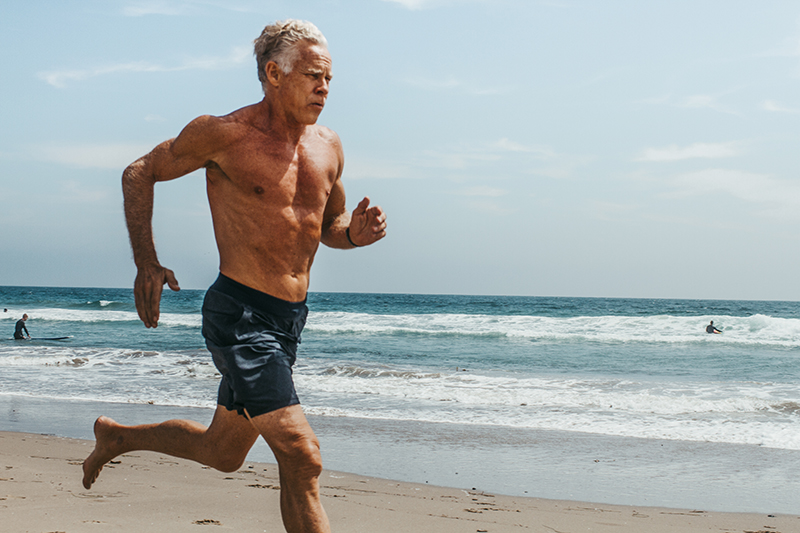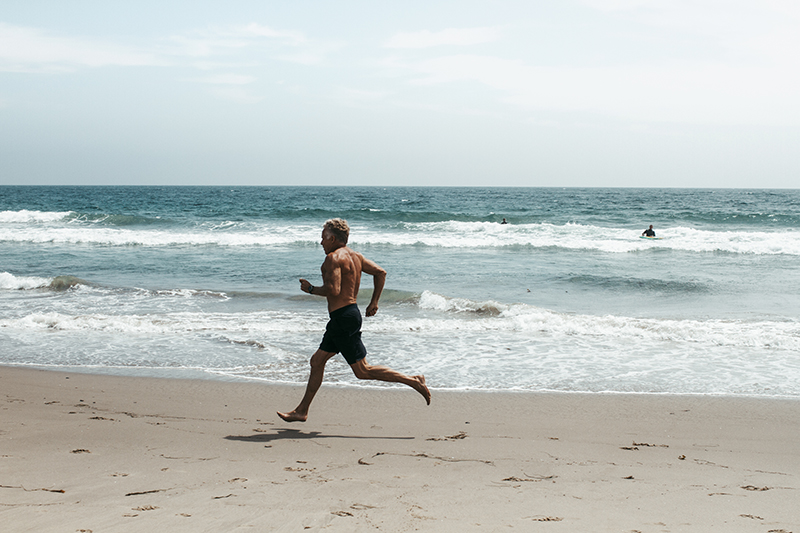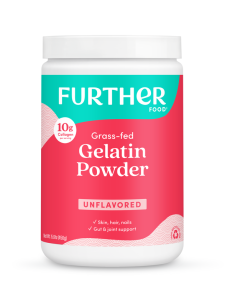The Best Exercise You’re Not Doing
Guest post by: Mark Sisson
The idea of sprinting—running as fast as you possibly can for short bursts—probably hasn’t crossed your mind in a decade or two. It should.
Think back to when you were in grade school. Remember how you got around the neighborhood, the schoolyard, the park? You either walked or you sprinted. It’s the natural movement pattern for small humans. Walk, sprint, repeat. Kids don’t jog. It’s all or nothing. This is actually pretty similar to how most experts depict the movement patterns of pre-agricultural human adults for the tens of thousands of years of human evolution: lots of walking interspersed with instances of maximum effort.
As adults, we find ourselves locked into a completely different movement pattern. We spend most of our time not moving at all, then try to rectify it by doing moderate intensity “cardio” a few times each week. Sit, shuffle, jog for 30-45 minutes three times a week, repeat. This doesn’t really work. Just look at the millions of overweight and obese people putting in time on the treadmill who get nowhere.
For many years, sprinting has been my secret weapon. Whenever I’m hard up for a training session but don’t have much time, I’ll go run six or seven hard sprints. If I’m traveling and there’s no gym available, I’ll go find the nearest hilly street and run up it a few times as fast as I can. And whenever someone comes to me trying to lose the last few inches of belly fat or get over a weight loss stall, I ask, “Are you sprinting?”
Most exercise isn’t actually very good at directly burning body fat. The old idea of mechanistically burning calories, and thus body fat, through protracted exercise is fairly outdated. Exercise certainly helps, but it does so mostly through second order effects—things like making you more insulin sensitive, reducing the allure of junk food, and helping you build muscle mass. But sprinting is different. It has direct and secondary effects on fat loss.

Sprinting increases fat burning for hours and even days afterward a hard session without increasing loss of lean muscle mass. If anything, sprinting has actually been shown to increase lean mass gain.
Sprinting clears glycogen from your muscles. When your muscle glycogen stores are empty, any carbs you eat will go toward filling them—not to the liver to be turned into fat.
Sprinting preferentially targets the most dangerous and hard-to-burn fat—visceral belly fat.
Sprinting creates new mitochondria. Mitochondria are the power plants of the cells, turning the energy we eat into the energy our tissues can use. Having more mitochondria allows us to metabolize more fat and carbs.
Sprinting is “over fast.” Although sprinting is physically harder in the moment than jogging, each sprint only lasts 5-15 seconds. This can make sprinting less “daunting” a prospect than committing to an hour-long jog, and make you more likely to stick with it.
The ability of regular sprinting to help you burn body fat and improve metabolic health are the most exciting rewards, but there are other benefits. I’m not in this game to lose weight; that’s never been an issue for me. My main justification for regular sprinting is that—fitness-wise—it gives the most bang for the buck.
Regular sprint training improves VO2max, endurance, exercise capacity, and other performance parameters normally associated with endurance training in a fraction of the time. Sprinting improves your endurance performance, even though endurance training doesn’t really improve your sprinting ability. That’s not to say that sprinting can fully replace endurance training for elite athletes, but it can certainly improve their performance when added to their normal routine—and it’s more than enough for most non-athletes who just want to improve their fitness.

My favorite way to sprint is on the beach, barefoot, with the prospect of a refreshing dunk in the water to follow. The sand provides just the right amount of cushion, and if I want to increase the difficulty I can move onto the dry sand. But running across a flat surface isn’t the only way to sprint.
If you have access, hill sprints are fantastic. They’re much harder than flat sprints, and they’re actually gentler on your joints because the angle lessens the impact and reduces how far your feet “fall” with each stride. When I lived in Malibu, hill sprints were my favorite. Anyone with knee issues who still wants to sprint should definitely try hills.
Sprinting isn’t even limited to running. You can do them on a stationary bike, a rower, a Stairmaster, an elliptical, in the pool. The possibilities are almost limitless, and pretty much everyone can figure out a way to sprint that works with their personal capacities. The key is that you give maximum effort—that you go all out and move as fast as you possibly can.
Perhaps the most important thing to keep in mind is that with sprinting, more is not necessarily better. Sprinting is hard. If it’s not, it’s not sprinting. This makes it self-limiting, and possibly detrimental if you try to do it too often. The vast majority of people will see major benefits from sprinting once a week. Maybe twice, if you’re sleeping well and make sure to get enough recovery between sessions. I myself sprint once a week, more if I’m not doing anything else in the gym.
Now, turn off the computer, put down the phone, drop what you’re doing, and go run (or cycle, or row, or swim) a few sprints. Enjoy the immediate rush—and the ongoing benefits. You’re welcome.
Author Bio:

Mark Sisson is a former elite endurance athlete who found his calling as an independent researcher, personal motivator, and thought leader within the ancestral health space. Rather than tying himself to a wheel of deprivation and regimen, he zealously advocates for a pursuit of pleasure and happiness, denying the conventional wisdom that we need to struggle and suffer to lose body fat and successfully manage weight. These days he’s almost embarrassed to admit how little time he devotes to exercise to maintain excellent fitness and delay the aging process. Join him and the Primal community at Mark’s Daily Apple for no-holds-barred commentary on low-carb nutrition, simple fitness, tempting recipes, and living awesome.
Primal Kitchen Deal!
Another great deal from Primal Kitchen! We love their new Ketchup and all their great sauces and mayonnaise. The garlic aoli mayo is amazing! Now for our followers only, get their Keto Kit and get a free bottle of ketchup! This ketchup is Kai’s favorite. And I love that there is no sweetener added!
CLICK HERE to get this deal!
















Out of curiosity, how long are each of your sprints?
I love this article, especially the part of sprints being only 5-15 seconds. 😊. Do you have a suggested regimen of how many days a week and how for how long it should be done? Example: 30 minutes total? 15 minutes total? Do you walk or jog between sprints? Thanks!
I think doing them for 10 minutes or so is good. And a couple days a week. 🙂
I’d suggest that someone new to full intensity sprinting try six short bursts at first, possibly less. For example 15 seconds sprinting with 15 seconds walking to recover for the next sprint. Then build up to longer sessions. If truly sprinting at full capacity, a four to six minute session would accomplish a great deal.
Good tips!
I have never been a runner, but this might be something I could do!
Hey off topic! What Psyllium husk powder do you currently use. I looked in Jay robb’s site for the one you suggested and it appears he no longer sells it. I am looking for a good bread substitute for my kids and the purple loaf that just came out will probably not go over well.
I am using the Anthony’s brand. I tried another recipe from a different website using the same psyllium husk powder and that one did not turn purple, but that recipe didn’t call for apple cider vinegar and it used whole eggs and butter. It just didn’t taste as good. I am wondering if it is the ACV that is reacting to the psyllium husk Powder…
You’ve inspired me to incorporate sprinting back into my routine!
What about changing elevations as you walk? I do 5 minute warm up at 1.5%, 3.5, then increase my incline by 5% every minute until i hit 10%, then down 5% for 30 seconds . Speed stays pretty constant, sometimes I need to go to 3.2 by 10% and I will up speed as I go down. I think it is a perfect 30 minute workout and my heart rate is high too.
Wanting to know if I can get same benefit as sprinting from this?
That is great too. Not sure you get quite the same benefit as with a full sprint or not though. 🙂
I’m recovering from a tennis injury to my foot. Would the sprint work the same seated with fast arm movements till I can fully run again?
It wouldn’t quite be the same, but any movement is good. 🙂
Have recently seen several articles that claim Keto is well. dangerous or ineffective.
I am a Keto believer but what, if any, truth is there to these claims? Thanks!
Bad science. One recent one that said low carb leads to more deaths. No one in the study ate less than 35% of calories from carbs. That is like 200 grams of carbs.
PS Am reading your book KETO and love it! I have order the spiral cookbook!
Thanks!!